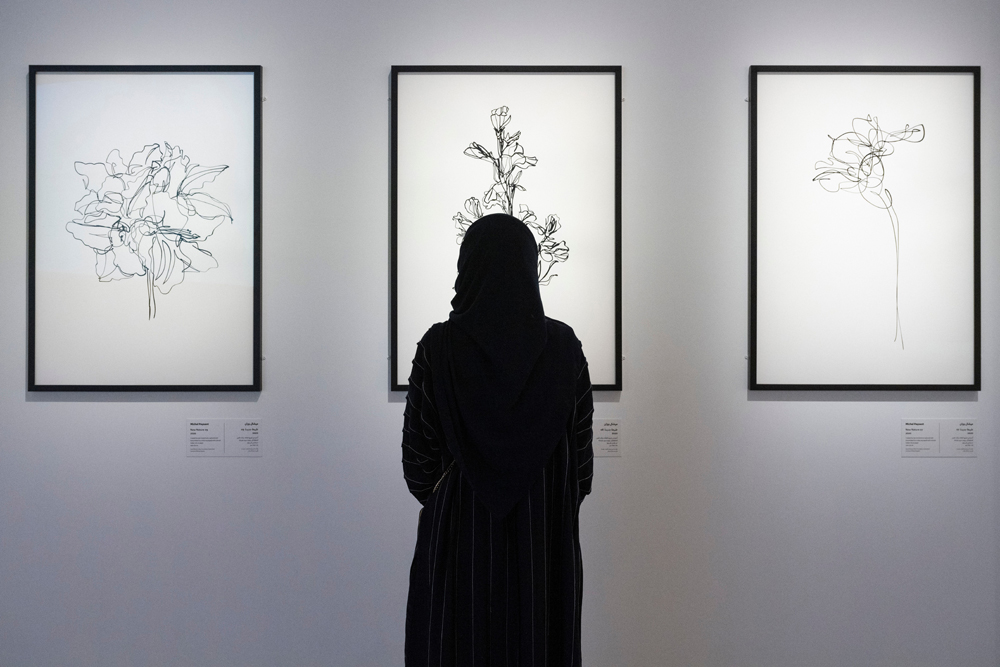
Images Courtesy of the Ministry of Culture
The “Scripts and Calligraphy: A Timeless Journey” exhibition, the latest initiative under the Saudi Ministry of Culture’s Year of Arabic Calligraphy umbrella, has kick-started the Kingdom’s cultural calendar. After a year of virtual events and initiatives, Riyadh’s National Museum has opened its doors for visitors to enjoy the ground-breaking exhibition that explores the past, present and future of Arabic calligraphy, Running until 21 August, the temporary retrospective got the Ministry of Culture, curators from the world’s leading research institutes and museums working alongside leading artists and calligraphers. They joined forces to shed light on the origins of the Arabic language, the development of calligraphy and the relationship between calligraphy, contemporary design and artificial intelligence.
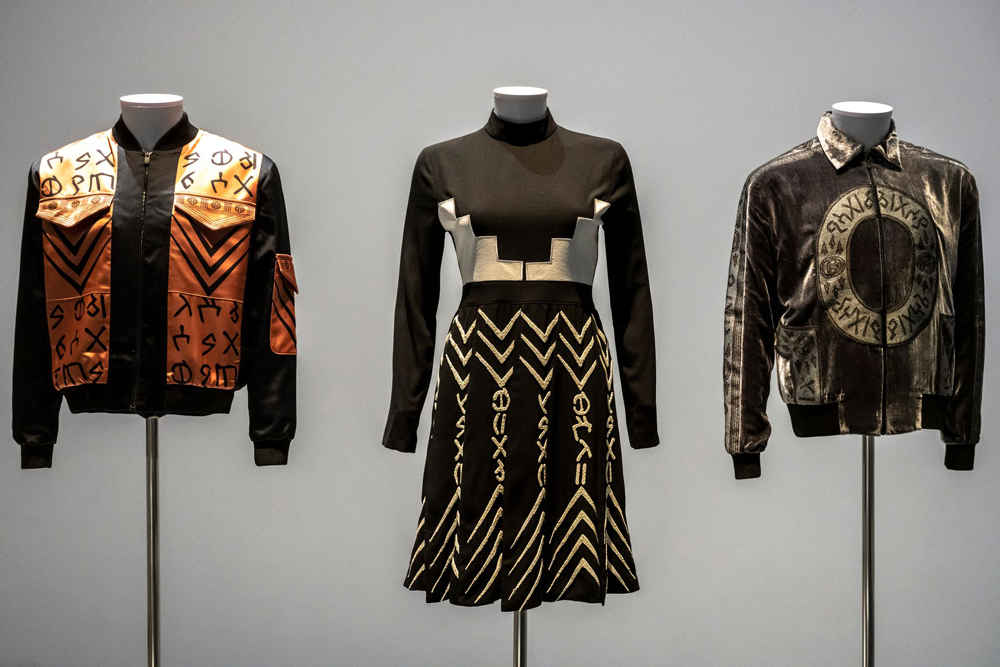
“Scripts and Calligraphy” takes visitors on a journey through time as they discover the development of the art of calligraphy through 180 artworks. Lent by generous museums from the Kingdom (National Museum, King Faisal Center for Research and Islamic Studies), Tunisia (National Heritage Institute) and France (Museum of the Arab World Institute), the creations are by great masters of Arabic calligraphy, designers and artificial intelligence artists from 17 countries. And they show the role Arabic calligraphy has been playing in furthering cultural relations between countries across the Middle East, North Africa and Asia.
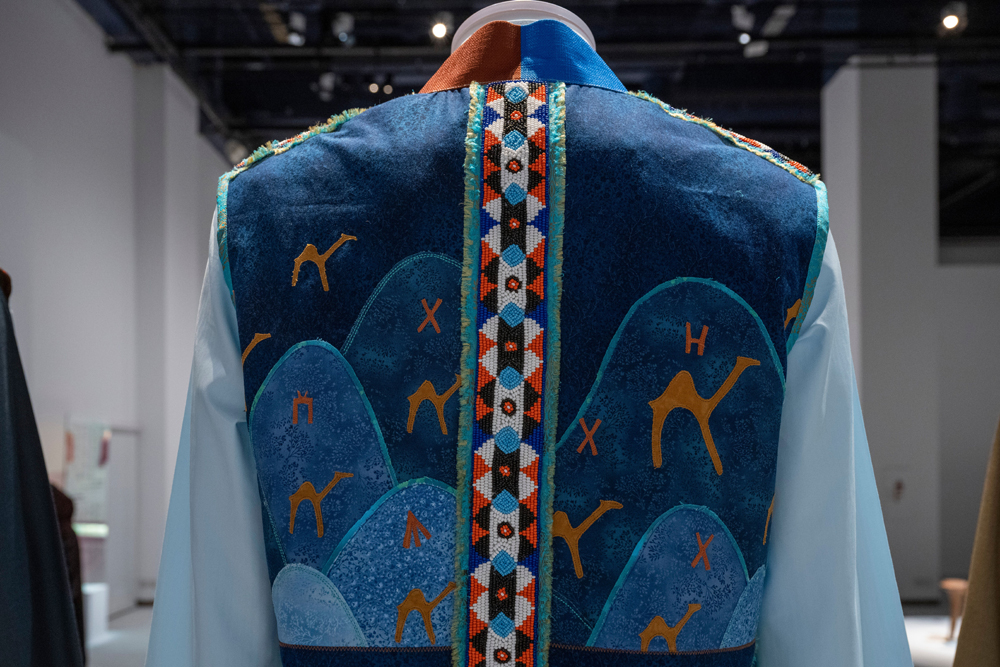
Taking up 1,500m2 of space at the Kingdom’s flagship museum, which is located within the King Abdulaziz Historical Center, the exhibition is divided into five sections. It starts with the development of early writing systems in the Middle East, some 1,700 years ago, with images of ancient Dadanitic and Nabatean inscriptions captured by celebrated photographer Robert Polidori in renowned AlUla. Visitors are invited to discover the story behind the inception of the Arabic script born in Saudi, which brought with it the art of Arabic calligraphy. On display are some of the earliest Quranic manuscripts in existence, like pages from a 7th century CE Quran from Madinah and those from the famous Blue Quran that dates back to the 9th century CE.
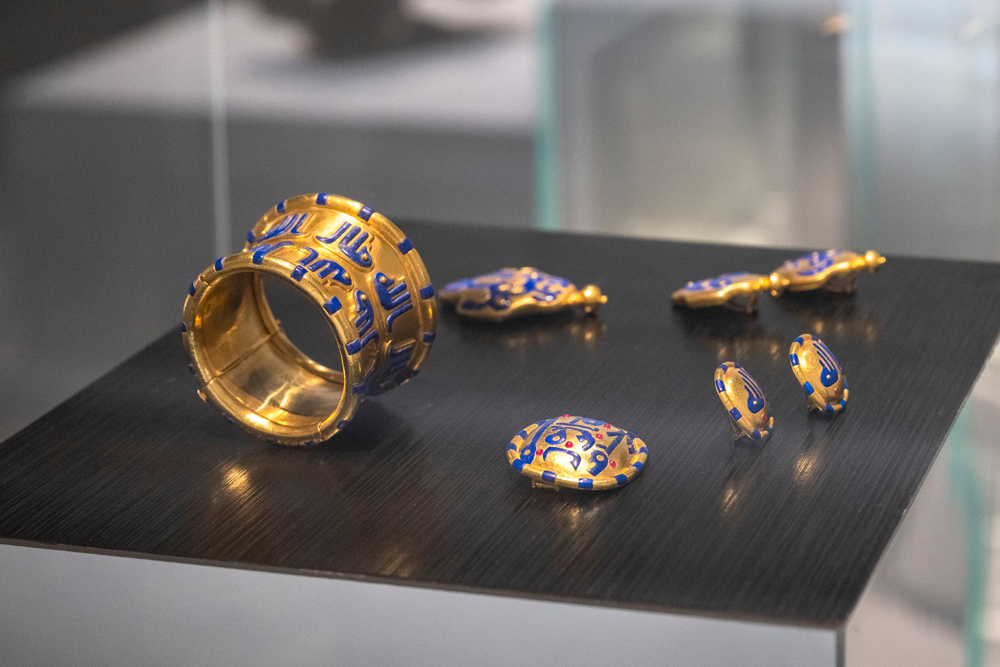
The exhibition includes the works of almost 30 of the world’s master calligraphers, including Chinese master Haji Noor Deen Mi Guang Jiang. It also highlights work by Ghani Alani, master of the Calligraphy School of Baghdad. Plus, “Scripts and Calligraphy” surprisingly creates a bridge between classical calligraphy and artificial intelligence. French artist Michel Paysant transcends the traditional interpretations of Arabic calligraphy in the latest edition of his “Eye Calligraphy Studio – A Constellation of Letters.” A robotic arm equipped with a paintbrush and connected to an eye-tracker, Paysant’s unique device translates eye movements into brushstrokes.
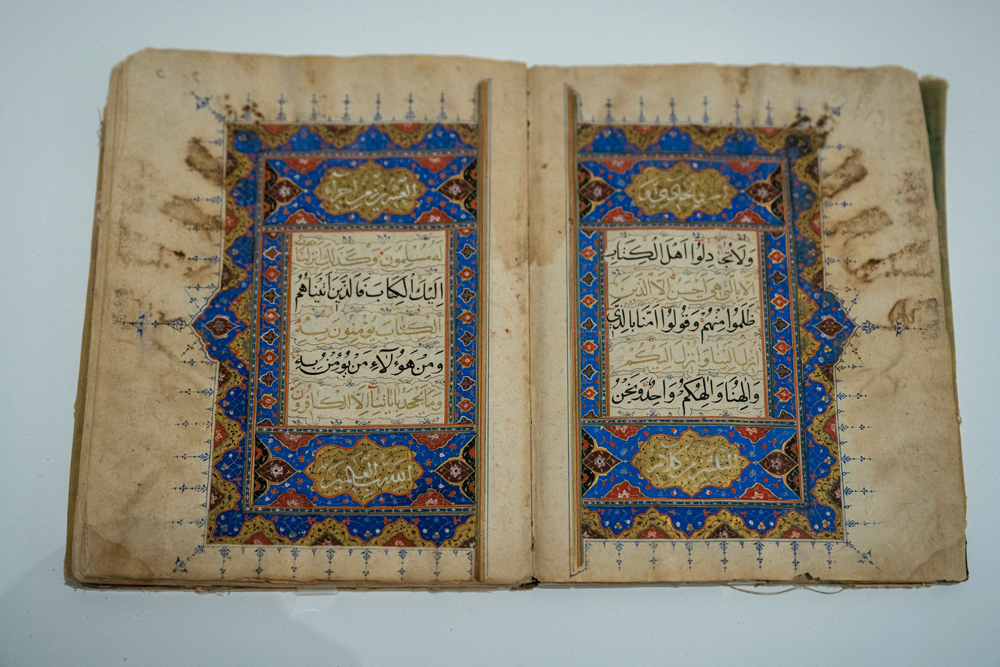
The work of contemporary artists, whether they’re involved in jewellery, textiles, ceramics or furniture, is also being showcased, alongside pieces by Saudi fashion designers May Aboulfaraj and Mohammed Khoja. They all convey the deep-rooted influence of Arabic calligraphy within the modern culture of the Arabian Peninsula.
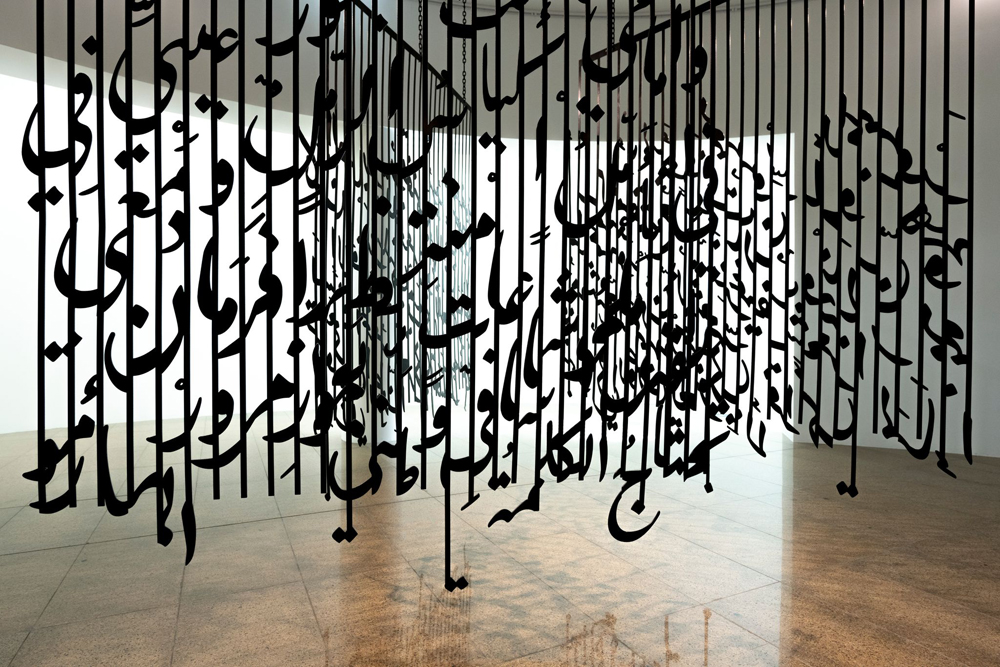
The Kingdom has for centuries been home to some of history’s finest Arabic calligraphers and Islamic artists. In celebration of this, 2020 was designated the Year of Arabic Calligraphy (YOAC), which was extended into 2021 due to the pandemic. YOAC seeks to celebrate the ancient art form as a symbol of cultural identity, a source of inspiration for artists and an essential component of the history of Arab civilization. The initiative that aims to tell the Kingdom’s story through an aesthetically beautiful and visually arresting artistic way is bringing together a diverse cohort of international artists and industry specialists, providing local Saudi artists with an opportunity to engage with and learn from leading experts. Additionally, it is encouraging cultural exchange with professional and amateur artists around the world.
While calligraphy is traditionally considered the purest Islamic art, with the earliest examples dating back over 2,000 years, today the influences of Arabic calligraphy are seen beyond the Arab and Islamic world.

















